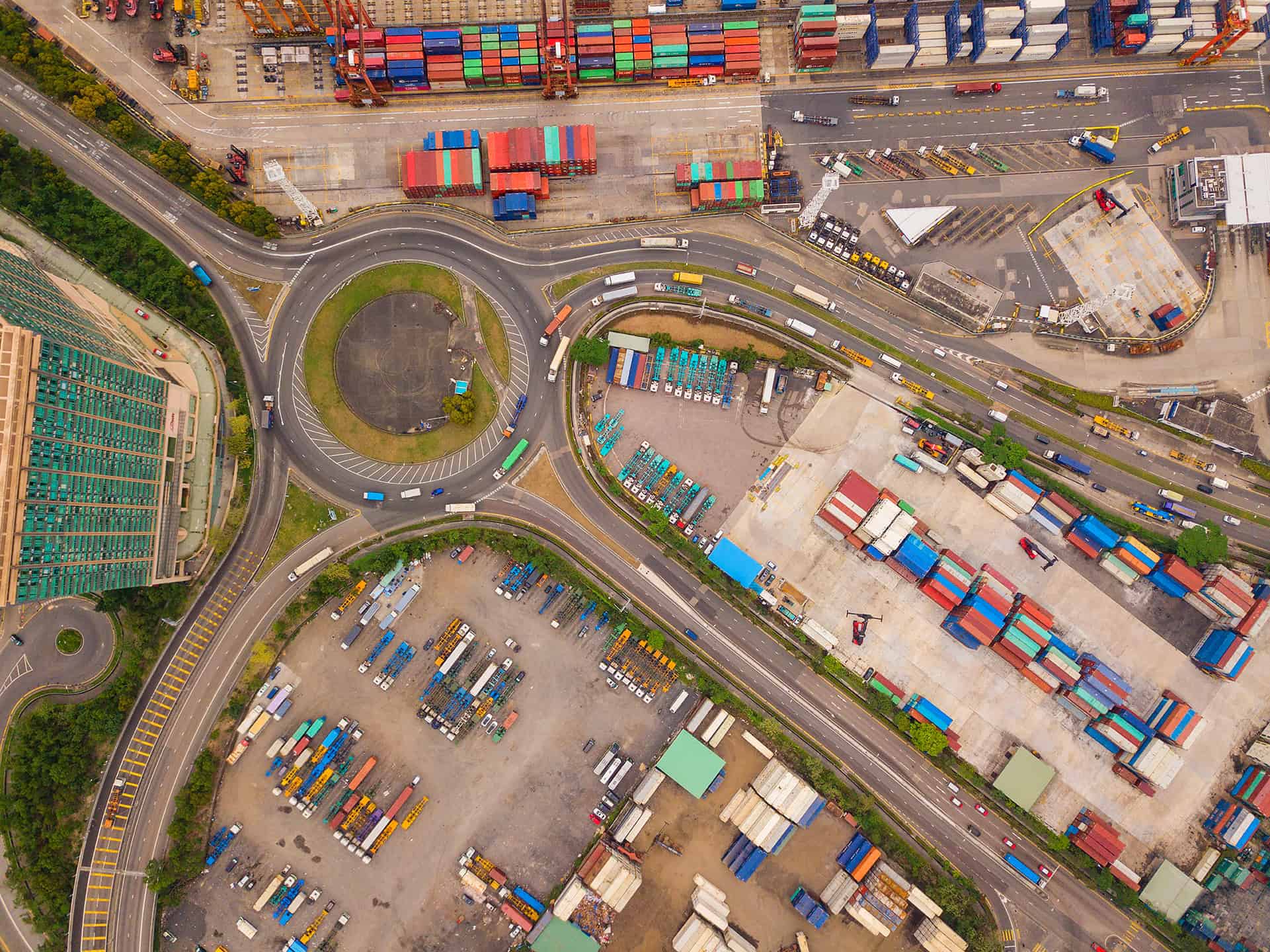
In a world where tariffs shift overnight and regulatory updates arrive before they’re published in the Federal Register, staying ahead of tariff and duty announcements has never been more critical for companies engaged in international trade.
That was the central theme of our webinar panel “Compliance Agility in an Era of Regulatory Uncertainty” featuring four seasoned leaders in global trade at General Mills, Johnson & Johnson, Johnson Controls, and Andy Simmons, a Senior Director, Solutions Consulting at e2open. With decades of experience across CPG, healthcare, manufacturing, and global trade technology, these experts share strategies on how to stay informed when policy shifts hit without warning or outside expected channels. This session–presented in collaboration with the American Association of Exporters and Importers – offers practical strategies for navigating shifting regulations.
Beyond the Federal Register: What international trade compliance looks like now
Moderator Virginia Thompson, a longtime global trader and customs leader at Johnson & Johnson, kicked things off with a candid observation:
“We have been greatly challenged. It’s a very different world than it was just three or four months ago for us,” said Thompson. Vendors and trade clients rely on the global healthcare company and their global knowledge to know what’s going on and to process their transactions legally around the world.
For years, trade teams built their compliance engines around a single source of truth: the Federal Register. Updates were reviewed, processed, and pushed into systems within 24 hours. But recent regulatory shifts have seen tariffs teased on social media, announced retroactively, and published through unlikely channels – creating significant compliance issues for companies managing import and export operations.
Today, executive orders and alerts from the Cargo Systems Messaging Service (CSMS) carry just as much legal weight and sometimes even more urgency. And they’re not always immediately reflected in the Federal Register
“We are pushing out the latest compliance information to our clients in real time, often multiple times a day,” says Kari Finch, Senior Manager of Global Trade Services at General Mills. “You’ve got multiple sources that you have to be looking at. It’s not enough to just be reading the Federal Register. You have to make sure that you’re looking at multiple sources of information to rely on to get what is the truth, if you will, from a regulatory point of view.”
Takeaway: Supply chain leaders need to react to potential regulatory changes before the formal rule. That means:
- Legal obligations now originate across platforms. Not just in one centralized publication.
- Software systems must evolve. And be able to integrate, interpret, and act on fragmented updates.
- Real-time compliance isn’t optional. It’s a core capability for global competitiveness.
Close coordination no longer optional: Tariff pressure tightens importer-broker ties
With updates arriving at all hours, Finch of General Mills says she’s had to reimagine how to keep her trade and customs teams informed. Traditionally, customs brokers have a 10-day window to finalize entry summaries. But with these recent sudden tariff changes, brokers have been scrambling to adjust import classifications, often having to address tariffs that can be announced with retroactive scopes.
New tariffs and duties don’t just impact importers. In the face of shifting trade rules, importers are rethinking more than just their compliance checklists. They’re also rethinking their relationships with customs brokers. The old, transactional model of importer-broker interaction is no longer enough, especially when managing compliance requirements across multiple jurisdictions.
“I think importers need to work with the brokers to make sure that there’s a common interpretation of the rules,” says Kathy Neal, Compliance Director at Johnson Controls. “Start there, right? Because these rules are somewhat ambiguous in certain circumstances, and so it’s important to be in line with the broker. Involve the company’s procurement or sourcing team to make sure that they understand the requirements for proof of origin of components.”
Takeaway: Collaborate with brokers early and often to reduce risk.
- Understand the data your broker needs. Discover both applicable exclusions and special provisions.
- Make sure it’s all there from the outset. That way the broker can process entries fast.
- Act on early indicators, not just official rules. In today’s trade environment, shared accuracy isn’t just good practice. It’s essential to keep your teams in sync.
New tariffs mean trade compliance starts deeper in the supply chain
The new trade environment means importers are being pushed to rethink how they collaborate across their entire supply chain. To get aligned, trade teams must converge on one fundamental question: What do the regulatory rules actually mean?
That ambiguity, especially around Section 232 duties on steel and aluminum, has heightened the importance of early coordination between compliance teams, brokers, and procurement. Proof of origin is no longer a box to check. Now it’s a burden of proof that can extend all the way down to Tier 2 and Tier 3 suppliers. And many of those suppliers? They may not even be tracking component origins in the way regulators now expect.
The takeaway: Set expectations early and often. Make sure everyone from sourcing to logistics understands not just what is required, but why.
- Prepare for a broader scope. That means building systems, relationships, and communication loops that didn’t exist before.
- Put your sub-tiers under a microscope. Visibility is more critical than ever and importers must know their supply chains all the way back.
With the Import Cost Calculator, run “what if?” trade scenarios and forecast landed costs
As trade regulations expand and derivative duties enter the spotlight, companies are confronting a new kind of data dilemma that plays out in three critical phases: getting the information, storing it, and actually using it, says Andy Simmons.
For global trade teams, that means delivering real-time daily data feeds of reliable trade content (updated tariff codes, restricted party screening lists, etc.) to move fast and stay compliant.
A new Import Cost Calculator developed by e2open helps companies quickly assess the full financial impact of their sourcing decisions and reduce risk in their customs procedures. Just type in a few key data points (HS code, country of export, and destination country, etc.) and view a clear dashboard showing all applicable tariffs, including Section 301 and anti-dumping duties.
The tool can streamline landed cost calculations by allowing users to input the entered value of goods and instantly see how additional tariffs affect overall cost. Multiple trade lane scenarios or HS codes can be submitted to compare outcomes side-by-side, enabling more informed sourcing decisions before goods move.
The takeaway: Give users the data they need to navigate today’s volatile trade environment with confidence.
- See what switching suppliers would do. Explore several switch-and-swap scenarios including any required permits, licenses, quotas, or anti-dumping risks.
- Integrate with broader enterprise systems. Link cost insights with compliance considerations.
Today’s regulatory reality demands speed, redundancy, and adopting a multi-source mindset to keep trade moving and customs compliant. By pairing a vigilant attitude toward new trade regulations with a structured tool, your trade teams can take action to power better decisions.
As tariffs, duties, and levies continue to shake out in surprising and unconventional ways, one thing’s clear: we need a structured, tech-enabled approach across all phases of trade compliance or the compliance risk only grows.
Want to learn more? You can watch the full webinar here.
Please reach out to one of our global trade experts, to learn more about how technology can help your team stay ahead of regulatory shifts, and reduce compliance risk.




